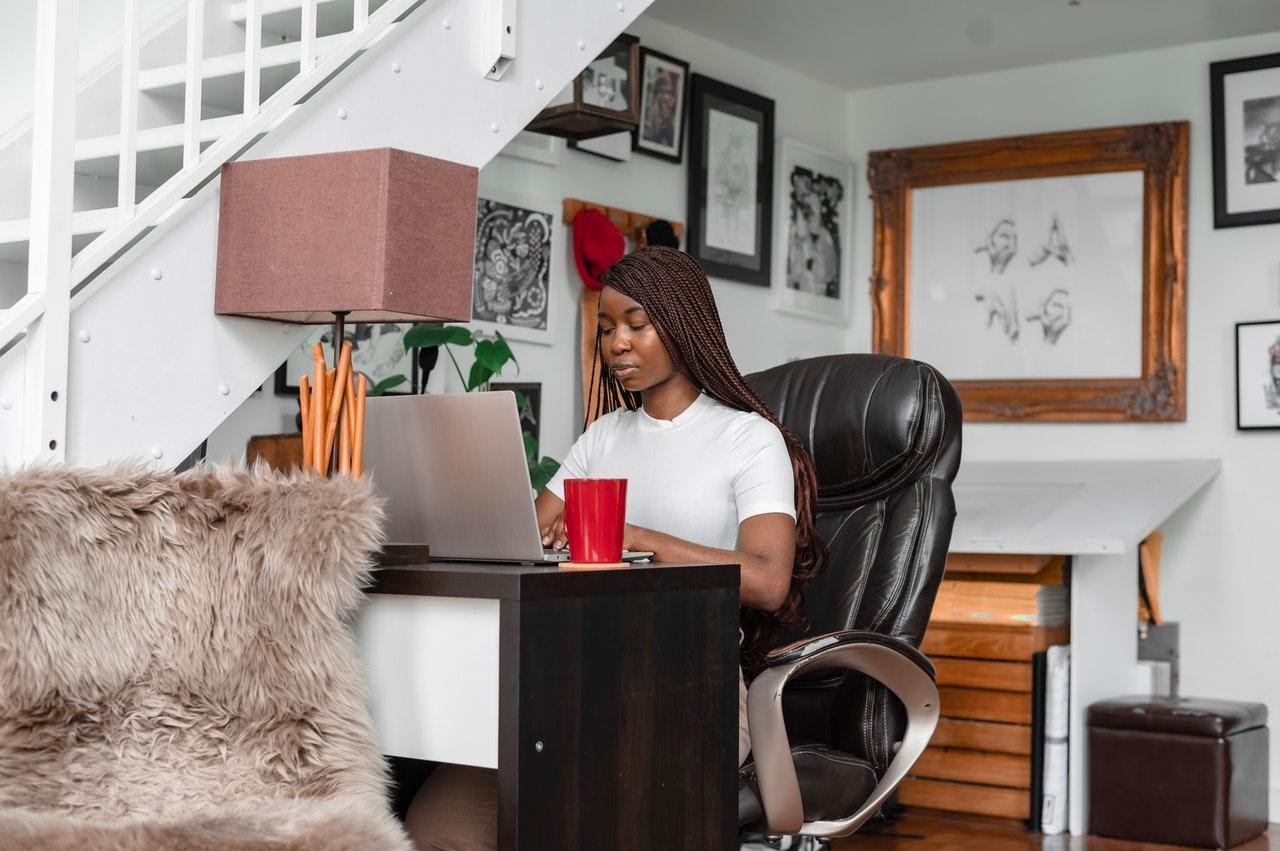How Being Nice Can Be Your Best Superpower

Fran Hauser has a passion for leveling the playing field for women, something she’s accomplished through startup investing, writing, and speaking. The Myth of the Nice Girl, which came out in 2018 and was Audible’s Top Business Book of the Year of 2018, has been translated into six languages.
Her second book, Embrace the Work, Love your Career, stems from decades working in senior leadership positions at Time Inc.’s People, InStyle and Entertainment Weekly as well as at AOL and Coca-Cola Enterprises. It’s a companion workbook offering advice, strategies, and thoughtful exercises, for women to build a career they love.
We sat down with Fran and talked through being nice (as a superpower), psychological safety, personal branding and much more. Below is an edited version of our conversation:

Being nice is a superpower, not a hindrance.
The Myth of the Nice Girl really came from all the mentoring I was doing and I had done over the years, and I always found myself in conversations around being nice, and how does that impact you at work? There’s this myth that nice girls don’t get the corner office. So I would always get asked the question, how can you be so nice and still be successful?
I found myself talking about this a lot and when I looked at bookshelves, there were no books on this topic other than nice girls don’t get the corner office. So I really wanted to write a book that debunked that myth, because I believe that there’s so much power in being nice. When you’re nice to people, you earn their trust.
And with trust you can develop relationships, and being successful in business at the end of the day is all about relationships.
When I was at Time Inc., I was the president of the digital business, and my team’s success was highly dependent on being able to get technology resources from the tech team to build the websites and the apps and other digital products.

I had a really wonderful relationship with Mitch Klaif who was the CTO of the company. I remember him saying at one point that he felt like people only reached out to him when there was a problem, their computer wasn’t working, the website was down. It was the only time he would hear from anyone.
I made such an effort to build a relationship with him and to check in with him, even just to say, thank you if someone on his team did a really nice job. I would email mitch and let him know. Sometimes I would email our CEO and let them know what a great job they were doing.
Because of that, I ended up developing a really wonderful relationship with him and I would walk into his office and he would say to me, what are you gonna ask me for now? Because I can never say no to you. That’s a very specific resource allocation.
My team ended up building People.com into the largest media website in the world. We could not have done that without Mitch’s team. So much of that came from the fact that he and I had such a great relationship and that I treated him as a human being, and that I was kind and I was warm and I was empathetic.

The other thing that I’ll say is you don’t have to choose between being nice and being strong. There’s this idea that if you’re too nice, you don’t want to be the pushover. You don’t want to veer into that territory or into people pleasing.
You could be nice and be strong. I really cared about my team, but I had very high expectations of them. When I was making a decision, I listened to people’s input, but at the end of the day, I made the call. So it’s not either or, and I do believe the best leaders lead with both of those qualities.
They’re nice and they’re strong.
The Importance Of Understanding Where You Add Value
It’s really hard to create a career that you love if you’re not adding real value. When you’re doing work that adds value and moves the needle for the company, gets you recognition and credit,it really helps you move through your career.
In a way that’s positive. I don’t want to say move up because it could even be moving to the side, or sometimes you need to take a step back before you can go forward.
But I do think that when you do work that adds real value and is contributing to the company’s overall goals, it’s just going to make you happier at work. I just know in my own career, those are the times that I’ve been the happiest.
Creating Psychological Space For Those Around You
Psychological safety is one of the most important things that we can do as leaders, to create a psychologically safe space so that your team feels comfortable sharing their perspectives and sharing their opinions. And knowing that, even if people disagree, they’re going to do so in a way that’s respectful.
Google looked at their most productive product teams from an ROI perspective, and the one common thread they found is that those teams all had created a psychologically safe environment.
It had nothing to do with how good they were, as technologists or how smart they were with schools. It was that they were on a team where they really felt respected and valued.
As a leader, it’s one of the most important things that we can do.
How Women Can Create Psychological Safety For Themselves
I really struggled with this early on in my career, I was incredibly shy. I found myself in meetings with really intimidating people with a lot more experience than I had, and I had a really hard time speaking.
My manager pulled me to the side after one of these meetings and said, ‘You need to start speaking up. Otherwise you’re going to be invisible.’ And I really took that to heart.
I looked at the agenda for the next meeting and I picked one thing that I felt like I had expertise in, and I practiced what I was going to say, going into the meeting. The more you practice something, the more confident you are.
I did that for a bunch of meetings, and I started getting into a really good groove. I started feeling more confident, I was starting a conversation, and people were listening, they were interested in what I had to say.
I eventually got to a point where I didn’t need to do that anymore, it was a little bit of a crutch. But in the beginning, that really helped me.
If I’m in a room where I fee imposter syndrome – like maybe I don’t belong there – what I might do is start speaking by asking questions, as opposed to sharing a point of view, because it’s safer. It’s not as risky to ask a question and it helps to build confidence.
And asking questions has so much value. If you ask the right question, you get a dialogue going. I always have some go-to questions in my head. Things like, “what does success look like” if I see that we’re having a conversation and we’re not getting anywhere and everything’s stuck.
I might say, “Let’s go back to what success looks like? Let’s spend a little bit of time talking about that.” And again, it just gets me speaking and then I feel more comfortable to share my point of view.

Kate Brodock, CEO of Switch: The “what if” questions also can offer value, because they have the potential to bring another perspective or get people thinking outside of the line of thought they were on. And they can be really easy as well. What would happen if our customers were to do this or something like that?
Fran: I love thinking about a third way, because sometimes we’re so focused on should we do this or should we do that?
You can encourage people to think about something in between or different. You don’t have to go all in on either one, you’re just getting people to think a little bit outside the box.
Kate: In situations where your value may not always be recognized by your manager, the leaders, are there any tactics that you can use or you might suggest in those instances?
Getting Your Value Recognized By Managers And Leaders
It’s really important to share your successes. If I would go to coffee with someone, or for a walk – sometimes we would just walk around the building, in the city, around the block – I always made sure that I found a way to share what I was working on, and I always did it from a place of, “I’m so excited about this project that I’m working on, let me share it with you!”
But it’s not starting by saying, ” I have this big success that I want to share with you.” It’s storytelling. I would always make sure that I was slipping those successes in. If you can do it in a way where you’re telling a story or where you’re sharing an insight so that the person feels like they’re learning.
Kate: I love the agile framework for 15-minute standups because it frames a meeting really well. If you have a 1:1, or even if it’s a team meeting, a question like, “what went well this week?” If you are the employee and you have the ability to structure a meeting, ” what went well this week” allows you to talk about team successes in which you can also talk about your contribution to those successes.
It still frames as, “we’re all steering the boat and here’s what I did.” So meetings could be another way if you have some level of control over the structure.
Stop Saying “Sorry” (And “Just”)
Somebody called me out on this, it was a peer of mine, we were working together and she said, “Fran, do you realize you apologize a lot?”
And I have to be honest, I did not believe her. So I went into my inbox and I typed the word “sorry” into the search field. And literally hundreds and hundreds of emails came back. When I reread those emails that I had written using the word “sorry”, what I’ve realized was that I was apologizing for really trivial things that – wow – I should not be apologizing for
I didn’t hurt anybody. It was, “I’m so sorry it’s taken me so long to get back to you,” or “I’m so sorry, I’m not going to be able to attend that,” or “I’m so sorry.” Literally my emails would start with “I’m sorry”.
What I realized was that I could often replace “I’m sorry” with “thank you”. Saying, “thank you for thinking of me”, and then explaining why I’m heads down working on something. So, “I won’t be able to attend”, but starting with a thank you.
“Thank you for your patience,” that’s one I use, “Thank you for understanding.”
I downloaded a Chrome extension called Just Not Sorry. It was created by a female engineer, Tammy Reese, she’s amazing. I talked to her recently, and she told me it’s been downloaded a half a million times.
Anytime you type the word “sorry” into your email, you get a little alert asking if you really want to say “I’m sorry.” I used that extension for a good year, just to wean off of saying “I’m sorry”.
Another thing is rereading your emails before you send them out.
I asked my friend who had called me on this, in meetings, to be my accountability buddy, and just kick me under the table, just be there for me.
It was so cool of her to share that with me. It’s never easy to share that kind of feedback, but it was such a gift. It really changed the way that I approached communication. It was a huge change for me just to acknowledge that this is something that I do. It’s a speech weakness. It’s not good. It puts me in a position of weakness.

Kate: It’s similar to the word “just”, which we talked about a couple of years ago too. When you say, “I’m just wondering,” or ” I just want to say,” that’s another word that I’ve gone over in my head and I type it.
Fran: I have such a hard time with that one. Like, “I’m just checking in.” I’m always going back and deleting it because my initial inclination is to include it. This is where I go into the downside of the people pleasing – “I’m just checking in”. When the person owes you an answer and it’s like two weeks behind.
Normalizing Saying “No” And Creating Boundaries
I just did an Instagram post on this. Why do we have such a hard time saying “no”? It’s really important to start there, to understand what your “why” is.
In the research I did for the book, what I learned from women is that it’s really complicated. There are a lot of reasons why we have a hard time saying “no”. Everything from people-pleasing, to FOMO, to coming back from parental leave and feeling vulnerable, wanting to show that you could still do it all. For some of us it’s wanting to retain control over the situation, just doing it ourselves because we know it’s going to get done well versus delegating it to someone else.
There are all these reasons.
The first step is to understand what your reason is. For me it’s people-pleasing. I’ve always been a people-pleaser. If I get a request in my inbox, my knee-jerk reaction is always to say “yes” because that’s who I am.
I always check in with myself and ask, are you saying “yes” just because you feel bad saying “no”? Or are you saying “yes” because this is aligned with your priorities, it’s strategic, or it’s something that’s going to bring you joy?
Having awareness of what your why is and checking in with yourself before you say “yes” is really important.
If you decide that it’s a “no” – most of the time it should be a no – your response can be short and sweet. We don’t need to over explain. We don’t need to write three paragraphs explaining why we can’t do something. It’s a couple of lines. “Thank you for thinking of me,” not, “I’m sorry.”
When I was writing this book, I would say “I’m heads down working on my book, building my business,” or “I’m heads down working on this project, so I won’t be able to participate. But I wish you all the best,” or “I’m cheering for you from the sidelines.” Whatever it is, that’s it. That’s your “no”.
What I like about that is it’s kind, it’s direct, and because it’s so short, you’re not sharing so much information that it gives the other person an opportunity to negotiate with you. The more you share, they’re going to try to figure out a way to say, what if we took out that piece, would you be able to do it?
The other thing is to understand that it’s just a “no” for now. You could also say, “This is something that I might be able to fit in. Let’s check back in a month or two.” It doesn’t have to be “no” forever. It’s just a “no” now.
There is a world in which “no” doesn’t shut the door on the opportunity, which may prevent people from really saying “no”.
Sometimes you just want to be helpful, maybe this person recently did a favor for you or you just genuinely care about this person. There’s this sweet spot between “yes” and “no” – “I can’t do that, but I can do this,” or “Unfortunately I can’t attend the event, but I’d be happy to promote it on social media,” or “I can’t join that committee, but I have an idea of somebody who I think would be great and I’d love to reach out to them on your behalf.”
Instead of something that could take hours of your time, it’s 10 minutes and you’re still being helpful.
Lastly, don’t respond right away. Give yourself time to really let it sit.
A couple of months ago I said yes to something because it sounded so interesting. An author was writing a fiction book and wanted to base one of the characters on me. How interesting! My books are nonfiction and it’d be so cool to be a part of that process and to understand character development.

So I said yes, and I haven’t been able to make the time to work on it. Any time he sends a document to look over, I start and then I can’t, I’m just not able to do it.
I just backed out this past week and I did it in a really kind way. I was honest and I said, “Oh my gosh, I want to be helpful, but what I’m finding is that every time I try to start working on this project, I end up getting distracted with other things that I have on my plate. I’d rather be honest with you now versus moving too far along in this project.”
I did offer to find other women that might be good. But honestly I wish I had just said no from the beginning because of all the time that I’d wasted.
Managing Time And Bandwidth
On perfectionism:
I had a big wake up call when I was working at TIME Inc where I realized that I was spending so much time perfecting internal reports and making them look beautiful. Or, if I had a business idea I wanted to talk to my boss about, I would always create a huge deck instead of going in and having a conversation.
I was doing way too much work on the form versus focusing on the substance and the content. That ended up saving me a lot of time.
On meetings (especially recurring ones!):
When I was leading the division at TIME Inc, I had eight direct reports, each one of them leading their own teams. I had 1:1 meetings with each of them for an hour every week. That’s eight hours. And they were literally going through their To Do list with me. It was so unproductive, such a waste of time, because I trusted them.
What I decided to do was stop doing those meetings and instead do one meeting with all of them together – so that’s one hour a week – and then I encouraged them, if they had a business idea that they wanted to talk to me about, or if they had a really big obstacle that they needed my help with, to get on my calendar for 20 minutes. We would focus on that one thing. It opened up so much time on my calendar.
On being relentless:
We started talking about boundaries and visualizing setting a fence around the things that really matter.
It starts with understanding what are the things that matter. Where do you want to be spending your time? Then, when you look at your calendar and where you’re spending your time, is it aligned? And if it’s not, do something.
Kate: One of the big things I started doing about a year and a half ago – life changing – I have phone call days, and I have white space days.
One of my greatest colleagues – she’s a coach – said to me, “Protect your white space.” And I am pretty relentless. There are of course high priority things that I make the conscious decision to insert, but I really try to keep those open.
I’ve also been very clear with people about my family obligations. Picking up kids from daycare, or if I have family in town. So this week I can’t do X time and my hours from 5:30 to 7:30 are protected.
A lot of it is communication.
Fran: I was just talking about this with someone the other day. This person said to me, “I don’t check emails after six o’clock. If you need to get a hold of me, if something’s urgent, just text me.” And I’ve really appreciated that, and we don’t do that enough. Let’s set our own boundaries and let’s communicate.
On being in the zone
The other thing is I like being in the zone on something. Today and tomorrow I have a lot of these types of things – podcast interviews, webinars – and I’m in the zone, I’m talking about the book.
We’re talking about how to optimize work and how to optimize our careers. That’s where I am, and it really works for me. I’ll have days where it’s just about writing, I’m creating content and I’m in that zone. The more that you can do that, the more effective that I am.
Creating A Personal Brand And Standing Out
Personal branding is really important because it helps you stand out.
I have my go-tos for different things. That person is my go-to when it comes to Digital marketing, that’s what she’s really good at. When founders in my portfolio need digital marketing help, that’s the person that I go to. Whereas there might be somebody else who’s good at conflict resolution.
Very early in my career, I was working at Coca-Cola, a big company, and I became known for the ability to simplify things.
I was working on financial reporting at the time. I took the quarterly Board of Director report – this really dense package – and I created a pamphlet out of it. A one-page, 8.5″x11″, front-and-back trifold and the board loved it. I ended up winning a corporate award for that work.
I became known for taking really complex information and simplifying and distilling it down to the most important takeaways. Because I became known for that, I got promoted and really accelerated through my career quickly there. I was 27 and I was running a team of 140 people.
I remember when I asked my boss why he promoted me over my peers who had 20 years more experience than I. He brought up that example, he brought up that work that I did.
That became my brand.
As I progressed throughout my career, my brand became more focused on my leadership style, and leading with kindness.
Whether you’re working for a big company, a small company, or working for yourself, it’s important to ask, “What are you the go-to for?” That’s what makes you indispensable.

And it doesn’t have to be about blasting it on social media, some people aren’t comfortable with that. One of the things I love doing is pulling together a group of five or eight people – it could be a lunch – and you each bring to the table something you’re really good at, something that you want to be known for, and you share it with the group.
It’s such an incredible experience because everybody is learning. While they’re learning, you’re also branding yourself, and it’s a way to do it in a smaller environment, where it feels safer.
That’s just one tactic that I love and you can do it in person, you can do it over zoom, whatever.
Kate: There was an interesting tactic that women were using in the workplace to make sure that they could support each other in advancement. You band together, you make sure you call on each other in meetings, etc. If you start to do that inside a work setting, that’s a really great opportunity, and then other people are sharing what you’re good at, and calling on you when your superpower is needed.
We were talking previously about good ways to insert yourself, in a meeting or to make sure that you’re presenting value is in those areas where you have identified what you’re really good at. Those could be the easier places to raise your hand.
Filling In Confidence Gaps By Focusing On Your Value
Hewlett-Packard did a study that proved that men will apply for a job if they feel they have 60% of the qualifications. Women feel that they need to have 100% of the qualifications, otherwise they’re not going to go for it.
This is something I’ve personally dealt with. I was at AOL, and TIME Inc, which was a sister division, had a job opening for a person who could work to bridge AOL and TIME to create business opportunities for the two divisions to work together.
I saw the job description and I immediately focused on what I didn’t have, the fact that I didn’t have any magazine publishing experience. It took a male colleague of mine to say, “Fran, are you crazy? You’re perfect for this job. You’re creative, you come up with the best ideas. You’re so good at bringing people together and developing relationships. You might not have magazine publishing experience, but you have digital media experience.” He really encouraged me to go for that job.

The other reason I was so scared was because those brands – they were such legacy brands, TIME, Fortune, Sports Illustrated, People, In Style – were brands that I grew up with, dreaming that one day I might be able to work right on these brands. But because of my colleague, I did go for it and I got the job and it completely changed the trajectory of my career. I ended up working at TIME Inc for 10 years and my last role there was President of Digital. I was in the C-Suite.
I automatically went to what I didn’t have as opposed to focusing on what I could bring to the table and all of the value that I would be able to create. When you’re looking at an opportunity, really focus on what it is that you have to bring to the table, because it’s probably so much greater than you initially would think.
How To Build Awareness Of Personal Strengths
Ask people you work with, when they think about you, what comes to mind? How would they describe you? How would they talk about what you’re good at?
Sometimes it’s hard to see it for yourself, and asking others to share that feedback with you, whether they’re your peers, whether they’re people that are junior to you senior to you, is always, really helpful, to get that feedback.
Kate: There’s a coaching exercise that’s right in this wheelhouse, focusing on the positives. We have a tendency to say, please tell me my strengths and weaknesses.
Go to your parents, to your friends, to your coworkers and ask for your strengths, only your strengths.
Text some people and say, “What are the first three words that come to mind when you think of where I’m strong.”

Building Rapport With A team In Today’s (Virtual) World
Let me start by saying that it really is so much easier to develop a relationship in-person than it is over the computer screen. If you can get together with people, it’s so important to make the time to do that, so that you can really develop relationships. If people are scattered all around the country or all around the world, even just doing a phone call with them.
If not in-person, can you pick up the phone and talk to them? I love to talk to people over the phone still. I have some younger people on my team who resist it. They would rather do voice texting with me than actually pick up the phone and have a conversation.
But what I find is that, especially if we’re trying to work through something, it’s so helpful to actually talk it through. Just try to find that one-on-one time, that in-person time, if you can.
[Kate] In the context of getting to know someone, it’s helpful to find places where you can reinforce. An example could simply be you learned that a colleague loved a particular genre of music and you heard a clip on NPR on your way to work. Ping them, “Hey, I thought of you, I heard this clip.” Send them something.
Being able to reinforce those personal touch points and knowledge that you’re developing about them in tiny ways can layer and be pretty powerful.
[Fran] I feel like more people are sending handwritten notes. I don’t know if the remote thing has something to do with it, maybe it’s just a way to connect on a different level, on a more tactile level. I’m seeing more of that. Or even sending a little gift to show I’m thinking of you.
I love receiving those.
Fran: One of the things that I’ve liked doing in my work meetings is breakout rooms. Whether it’s at the beginning of the meeting or at the end of the meeting, for five or 10 minutes to really spend time getting to know each other and connecting in a different way or at a different level.
You might feel more comfortable doing it in breakout rooms, a way to feel more comfortable.
Kate: Being explicit about that purpose may be helpful. It depends on the team dynamics, but instead of being subtle about it and just introducing it to a meeting, really being explicit about saying, “Hey, we’re going to be adding this as part of our meetings. Ongoing, quick exercises so that we can connect to and learn more about each other, as humans in the workplace.”
Fran: I was in a meeting recently where the person started the meeting by asking everybody to drop into chat one word describing how they’re feeling. It was such a nice way to get the temperature of the group and how people are feeling. Are they feeling stressed? Are they feeling tired? Are they feeling overwhelmed? Are they feeling energized?
And then acknowledging that, taking a minute to say, this is how we’re all feeling, let’s acknowledge it. It was such a quick and very effective way of grounding the meeting, instead of just jumping into the agenda.
When you ask the question, just drop it into chat. So it’s not taking over so much time where everybody’s verbalizing it.
Cut yourself some slack while you’re at it.
Small acts can make a big difference. If I’m feeling overwhelmed, I chunk it out and just focus on one thing right now. I’m just going to focus on that, even if it’s for 10 minutes, 15 minutes, 20 minutes, and then I’m going to feel good that I got something accomplished.
I’ve been continuing to hear from so many of my friends and colleagues how much they have on their plate and how they’re feeling such overwhelm. Cut yourself some slack, start with one thing, take one step.
This interview was conducted with Kate Brodock of Switch originally appeared on their website.





